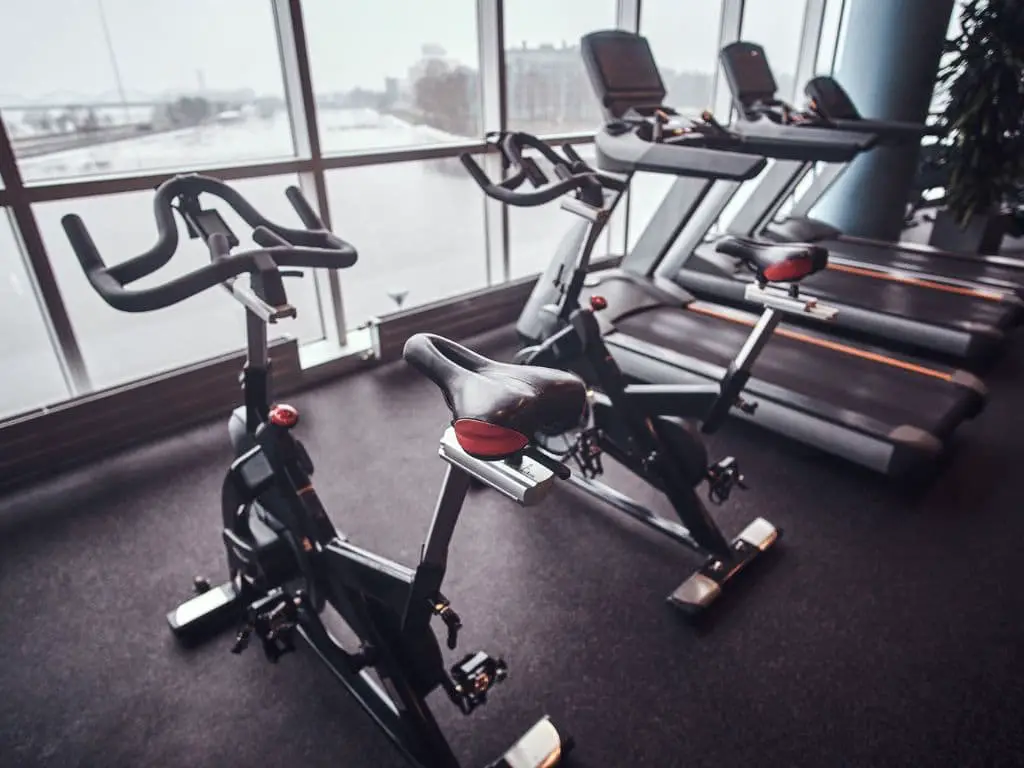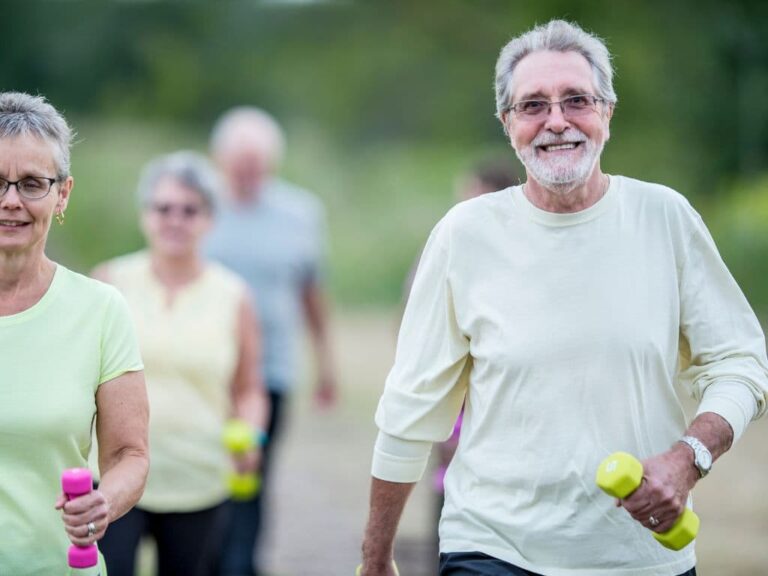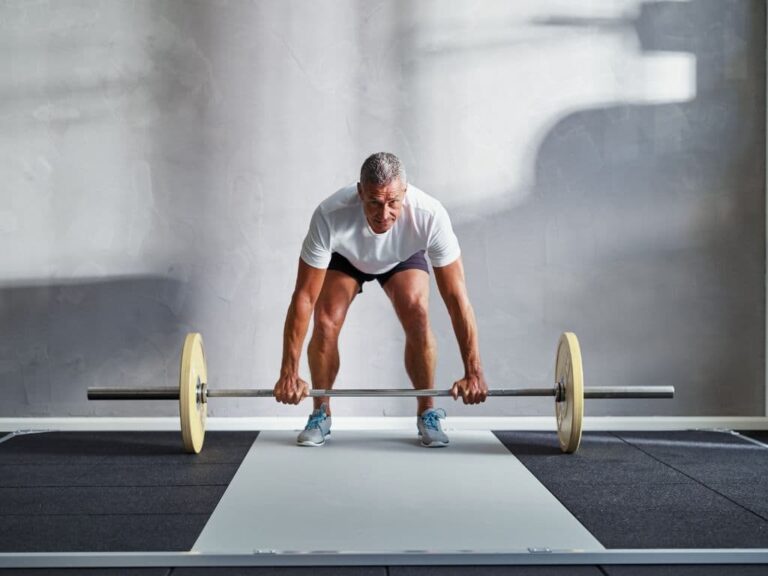Is Biking or Walking Better for Knees?
Knee pain and arthritis are common issues that can make exercise difficult. Choosing low-impact activities like biking and walking can help improve joint health and mobility without causing further pain or damage.
But is one better than the other for your knees? Is biking or walking better for the knees?
Biking is generally better for the knees than walking. It’s a low-impact exercise that reduces stress on the joint as the bike seat supports your body weight, unlike walking which is a weight-bearing exercise. Biking also helps lubricate knee joints, reduce painful symptoms, and improve mobility and range of motion, especially beneficial for those with severe arthritis or inflammation.
Understanding the differences between biking and walking can help you make the best choice for managing knee problems.

What Is the Difference Between Biking and Walking in Terms of Impact on the Knees?
Overall, biking may be slightly better for those with more severe knee pain or arthritis due to its low-impact and circular pedaling motion. However, both offer benefits if done with proper form and gradual progression. Consulting a physical therapist can help determine the best options for your individual knee health.
Here is a table comparing biking vs walking for knee health:
| Biking | Walking | |
|---|---|---|
| Impact on knees | Low-impact, reduces force on knees | Weight-bearing, force exerted through knees |
| Knee pain and arthritis | Circular motion can help lubricate joints | Low-impact if done carefully, but potentially more painful |
| Mobility and range of motion | Pedaling motion flexes/extends knee joint | Gradual flexing and straightening of knees |
| Muscle strength | Builds leg muscles to support knees | Strengthens leg muscles around knees |
| Aerobic fitness | Excellent for cardio, works all leg muscle groups | Also great for aerobic conditioning |
| Weight loss | Helps burn calories and reduce pressure on knees | Weight-bearing can aid fat loss |
| Best bike type | Stationary, recumbent or exercise bike best for knee issues | N/A |
| Preventing knee pain | Adjust seat height, keep cadence steady, avoid pushing gears | Maintain proper gait and posture, bend knees slightly |
When it comes to knee health, it’s important to understand the difference between weight-bearing and low-impact exercises. Weight-bearing exercises like walking require your legs and knees to support your full body weight against gravity. This places stress on the joint surfaces, ligaments, and muscles surrounding the knee. In contrast, cycling is considered a low-impact exercise because the bike seat supports your body weight, reducing the force on your knees.
For those with knee pain, inflammation, and stiffness, biking may be preferable to walking because it transfers body weight through the pedals, rather than directly on the knee joint. The circular motion of pedaling can help lubricate knee joints and reduce painful symptoms. However, walking is also a low-impact exercise that can improve knee mobility if done carefully. The impact depends on the individual’s degree of knee problems. Those with severe arthritis or inflammation may benefit more from biking.
Biking and walking can both play an important role in maintaining and improving knee mobility and range of motion. The alternating bending and extending motion of pedaling works the joint through a controlled range, which can help prevent stiffness. Walking also flexes and straightens the knees in a gradual way. For those recovering from knee injuries or surgery, both low-impact exercises can be beneficial in safely regaining flexibility and strength.
How Can Biking and Walking Benefit People With Knee Pain or Arthritis?
Cycling and walking provide strength and endurance training for the muscles surrounding the knees. Building muscle tone in the quads, hamstrings, and calves helps support and stabilize knee joints. Stronger leg muscles can help absorb shock and reduce the impact on knee joints during weight-bearing activities. Biking works all the major muscle groups of the legs in a low-impact way.
Both biking and walking are excellent forms of aerobic exercise that can improve cardiovascular health. Aerobic activity conditions your heart and lungs, helps control blood pressure, and raises your metabolism. The longer duration and rhythmic nature of these activities compared to other exercises maximizes aerobic benefits. Staying physically active through low-impact leg exercise is crucial for overall fitness.
Biking and walking can also facilitate weight loss, which is beneficial for reducing load and pressure on knee joints. The combination of muscle conditioning and aerobic activity helps burn calories and body fat. Additionally, the weight-bearing nature of walking can help build bone density in the hips and legs, improving strength in the areas surrounding the knees.
Which Type of Bike Is Best for People With Knee Problems?
For cycling specifically, exercise bikes, recumbent bikes, and stationary bikes allow you to adjust settings like seat height which helps reduce knee strain. Recumbent bikes also offer back support. Mountain biking can be low-impact with proper technique, but does involve some impact from trail obstacles. Road biking requires bending knees and hunching over handlebars which could aggravate some knee problems.
It’s best to choose a bike that allows a comfortable pedaling motion without overextending your knees or causing discomfort. Customizing bike settings is key. Consulting a bike expert or physical therapist can ensure you select the ideal bike and seat position for your unique needs and knee problems. Riding a bike that fits your body properly will provide the most knee benefits.
How Can You Safely Start a Biking or Walking Program for People With Knee Pain?
If you have knee pain, it’s important to take a gradual approach when starting a new biking or walking routine. Begin with just a few minutes at a time and slowly increase duration. Ride on flat surfaces or walk on even terrain initially. Pedal or stride at a slow, steady pace in an easy gear. Give yourself rest days between sessions to avoid overuse injuries. Using ice and over-the-counter anti-inflammatories can help manage knee discomfort.
Gradual progression over several weeks to months is key to building fitness while preventing knee pain. Slowly increase mileage, terrain difficulty, pedaling resistance, or pace. Avoid aggressive training. Listen to warning signs from your knees like popping, stiffness, and swelling. Be willing to dial back activity if your knees become painful. Patience is required to strengthen knees without strain.
What Are the Best Practices to Prevent Knee Pain While Biking or Walking?
To prevent knee pain while biking or walking, maintain proper form and body positioning. Adjust your seat height to avoid hyperextension. Wear supportive footwear with cushioning. Keep your cadence steady and avoid pushing large gears. Stay focused on low-impact activity and avoid high-intensity training. Strengthen leg muscles through exercises like squats or lunges to better support your knees. Always warm up before cycling or walking.
Using proper technique is critical for knee health in any exercise. Walk with a normal gait and bend knees slightly. Avoid locking knees. Pedal in a smooth circular motion without grinding pressure. Maintaining correct alignment and position will optimize impact on your knees. Consider consulting a physical therapist if you have poor form or posture that could be corrected to prevent knee pain.
Conclusion
For those with knee issues, biking and walking are two excellent low-impact exercises. Cycling avoids pressure through knees by supporting body weight on a seat. Walking gently flexes knees while strengthening legs. Both build crucial muscle tone and aerobic capacity. With proper precautions, those with knee pain or arthritis can safely enjoy cycling and walking to improve joint health.
Beginning a walking or biking routine can feel intimidating when you have knee problems. But adjusting intensity, using proper form, and being patient with gradual gains can make these activities pain-free and beneficial. Simple steps like purchasing a gel seat cover, wearing a knee brace, or icing after a ride can also prevent knee pain. If you proceed carefully, you can strengthen your knees through low-impact exercise. Cycling or walking offers many physical and mental health gains for those with knee issues.
Frequently Asked Questions
-
Is biking or walking better for knees?
The researcher stated that “we expected that walking on the treadmill which is less controlled would be more beneficial than bicycling [in terms of low knee impact]”. He said that biking won the race. Additional details: Biking produced the most force and had an impact about 1.3x the body’s weight.
-
What is the best exercise for osteoarthritis of the knee?
Walking. Walking is a good exercise, even if your knees are stiff. You can start slow and then increase your speed. It is possible to ease your joint pain, strengthen your legs muscles, improve posture and increase your flexibility.
-
Is stationary bike good for knees?
A 2021 study published in Clinical Rehabilitation found that stationary biking reduced pain and function for people suffering from knee osteoarthritis.
-
Is biking good for knees?
You can increase your hip range and strength your quadriceps by pedaling moderately. Your glutes, hamstrings, as well as the muscles around your knees can be strengthened by cycling.
-
Should I exercise if my knee hurts?
Exercise can seem difficult if you have sore knees. But it is also the most beneficial thing that you can do. According to Dr. Lauren Elson of Harvard Medical School, exercise is one of your best options for treating knee pain.
-
Does walking strengthen knees?
Walking. Walking, which is low in impact and doesn’t stress your knees too hard, can strengthen those muscles.
-
Can you increase cartilage in your knees?
Cartilage Regeneration Options MACI uses your cartilage-forming cells to repair damaged cartilage. The procedure involves taking a biopsy and removing chondrocytes, which can then be grown in a laboratory. They are then implanted into the affected area.
-
Is walking or biking better for knees?
The researcher stated that “we expected that walking on the treadmill which is less controlled would be more beneficial than bicycling [in terms of low knee impact]”. He said that biking won the race. Additional details: Biking produced the most force and had an impact about 1.3x the body’s weight.
-
How can I rebuild my knee strength?
Slowly extend your knee with your foot bent, keeping the ankle straight. Hold for 3-5 seconds and then slowly lower under control. Repeat the 10th repetition with your other leg. As many sets as you need, you can perform 2-3 sets. To increase resistance, add ankle weights as you gain strength.
-
How often should I do knee strengthening exercises?
You can maintain your strength and motion by performing the exercises twice to three times a week.
-
How can I strengthen my knee cartilage?
Choose a stool or chair that is high enough to allow your knees and hips to bend in a 90 degree angle. A light-weight cuff should be worn on the calf, just above your ankle. Slowly extend one leg out and raise it. Hold for five seconds and then bend down and lower the leg. You can do this 8-12 times, then you’ll repeat the process with the second leg.
-
What is the best supplement to rebuild cartilage?
Non-surgical options: Chondroitin and glucosamine are non-surgical treatments for cartilage repair. The body naturally produces chondroitin sulphate (and glucosamine) which prevents the degradation of cartilage. They also promote new growth.
-
What causes weak knee muscles?
There are two main causes of weakness in the knee: mechanical problems and weakening. Other than overuse, other causes of knee pain are mechanical issues, such as muscle imbalance, a loss of cartilage, or injuries to the knees, including torn ligaments and meniscal tears.
-
How many times a week should I do knee exercises?
You can maintain your strength and motion by performing the exercises twice to three times a week.
-
Does cycling strengthen knees?
The benefits of riding a bicycle are obvious. It is non-weight bearing and low impact. To strengthen your knees, you can do safe bike therapy.







